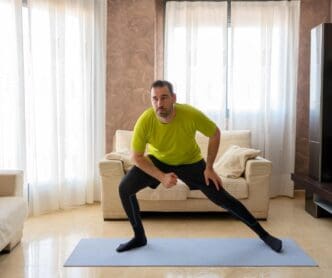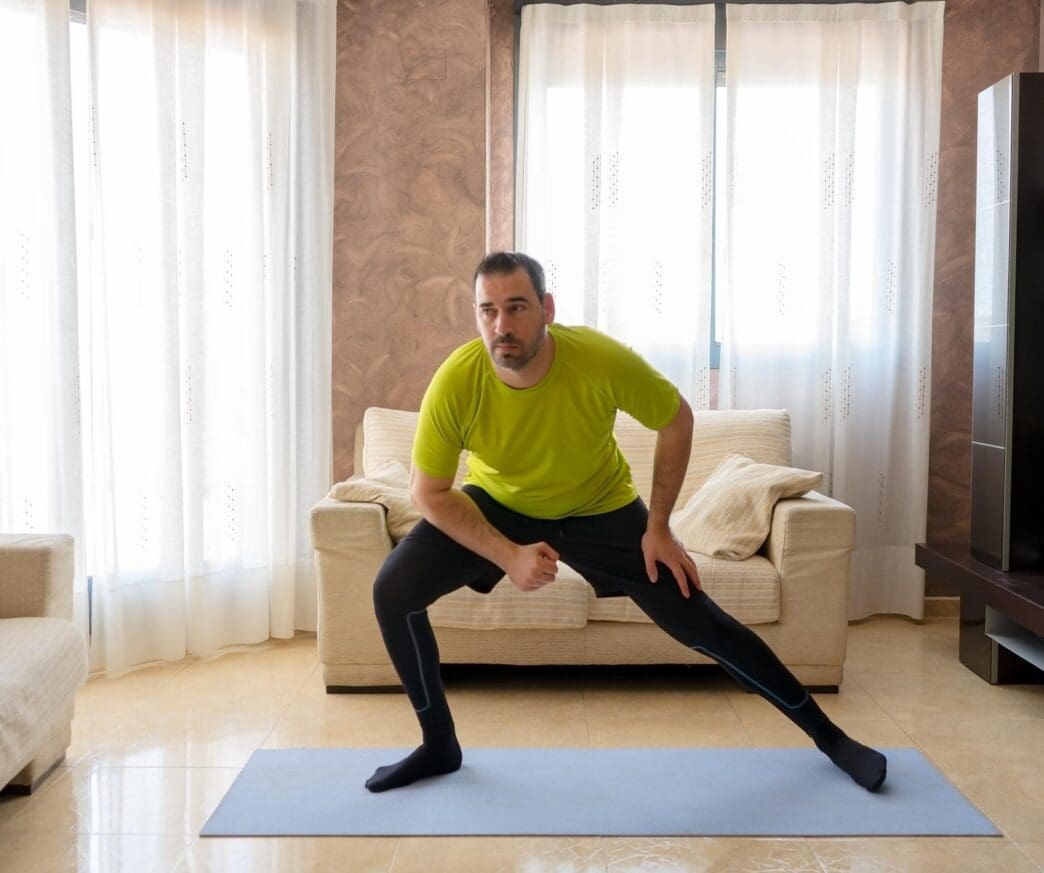A Quick Takeaway
The Story Behind the Trend
How to Make It Work for You
The Community View
Men over 40 face unique physiological shifts that necessitate a strategic approach to fitness, making it imperative to adapt exercise routines to maintain strength, vitality, and overall health. As metabolism slows, muscle mass naturally declines, and joint health becomes a greater consideration, a well-rounded fitness regimen focusing on strength, cardiovascular health, and flexibility becomes not just beneficial but essential for combating age-related decline and sustaining a high quality of life. This article will delve into the top exercises and principles specifically tailored for men in this age group, empowering them to unlock peak physical condition and ensure longevity.
The Evolving Landscape of Fitness After 40
Physiological changes become more pronounced in men after their fourth decade. Testosterone levels begin a gradual decline, impacting muscle synthesis and energy levels, while metabolic rate slows, making weight management more challenging. Bone density can also start to decrease, and joints may experience increased stiffness or discomfort. Ignoring these shifts can lead to a higher risk of injury, chronic conditions, and a significant drop in overall fitness. Recognizing these changes is the first step toward building an effective and sustainable fitness plan that supports long-term health.
Core Principles for Training Over 40
For men over 40, the emphasis shifts from purely performance-driven goals to a more holistic approach centered on health, injury prevention, and sustainable progress. Consistency is paramount; regular, moderate activity yields far better results than sporadic, intense bursts. Proper form must always take precedence over lifting heavy weights, safeguarding joints and maximizing muscle activation. Adequate recovery, including sufficient sleep and rest days, is critical for muscle repair and preventing burnout. Finally, listening to one’s body and making adjustments based on how it responds is key to a long and healthy fitness journey.
The Foundation: Strength Training
Strength training is arguably the most crucial component of a fitness regimen for men over 40, directly combating sarcopenia (age-related muscle loss) and improving bone density. It boosts metabolism, enhances functional strength for daily activities, and contributes significantly to hormonal balance. Aim for two to three full-body strength sessions per week, allowing for at least 48 hours of recovery between sessions.
Key Compound Exercises
Compound exercises, which engage multiple muscle groups and joints simultaneously, are highly efficient and effective.
- Squats (Barbell, Dumbbell, Goblet): Essential for lower body strength, core stability, and hip mobility. Focus on depth and controlled movement.
- Deadlifts (Conventional, Romanian, Trap Bar): A powerful full-body exercise that strengthens the posterior chain, back, and grip. Start with lighter weights and perfect form.
- Overhead Press (Dumbbell, Barbell): Builds upper body strength, particularly in the shoulders and triceps, while engaging the core.
- Bench Press (Dumbbell, Barbell, Push-ups): Targets the chest, shoulders, and triceps. Push-ups are an excellent bodyweight alternative that can be modified for various fitness levels.
- Rows (Dumbbell, Barbell, Cable): Crucial for back strength, posture, and balancing the pushing movements. Bent-over rows or seated cable rows are excellent choices.
For each exercise, perform 3-4 sets of 8-12 repetitions, focusing on controlled movements through the full range of motion. Gradually increase resistance as strength improves, adhering to the principle of progressive overload.
Cardiovascular Health: More Than Just Running
Maintaining robust cardiovascular health is non-negotiable for men over 40, significantly reducing the risk of heart disease, stroke, and type 2 diabetes. Cardio also improves endurance, supports healthy blood pressure, and aids in weight management. While running is an option, lower-impact activities are often more joint-friendly and sustainable.
Recommended Cardio Activities
Aim for at least 150 minutes of moderate-intensity aerobic activity or 75 minutes of vigorous-intensity activity per week.
- Brisk Walking: An accessible, low-impact option that can be done daily. Incorporate inclines or varied terrain for added challenge.
- Cycling (Outdoor or Stationary): Excellent for cardiovascular fitness while being easy on the joints. Vary resistance and speed.
- Swimming: A full-body, non-impact workout that builds endurance and strength without stressing joints.
- Elliptical Trainer: Provides a low-impact, full-body workout that mimics running without the harsh impact.
- High-Intensity Interval Training (HIIT): While effective, approach HIIT with caution. Start with shorter intervals and ensure a thorough warm-up and cool-down. Consult a professional before diving into intense HIIT, especially if new to it or with pre-existing conditions.
Mix and match these activities to keep your routine engaging and to work different muscle groups.
Flexibility and Mobility: The Unsung Heroes
Often overlooked, flexibility and mobility are vital for preventing injuries, improving range of motion, and maintaining functional independence as we age. Stiff joints and tight muscles can limit movement, lead to pain, and hinder performance in other exercises. Incorporating dedicated flexibility work into your routine can significantly enhance overall well-being.
Key Practices for Flexibility and Mobility
Dedicate 10-15 minutes to these practices after workouts or on rest days.
- Dynamic Stretching: Perform before workouts to warm up muscles and improve range of motion (e.g., leg swings, arm circles, torso twists).
- Static Stretching: Hold stretches for 20-30 seconds after workouts or as a separate session to improve flexibility (e.g., hamstring stretches, quad stretches, chest opener).
- Yoga and Pilates: These practices combine strength, flexibility, balance, and mindfulness, offering a comprehensive approach to body control and joint health.
- Foam Rolling: Self-myofascial release techniques using a foam roller can help release muscle tightness and improve tissue quality.
Focus on major muscle groups and areas prone to tightness, such as the hips, hamstrings, chest, and shoulders.
The Role of Nutrition and Recovery
Exercise is only one piece of the puzzle; proper nutrition and adequate recovery are equally critical for men over 40 seeking peak fitness. A balanced diet rich in lean protein, healthy fats, complex carbohydrates, and plenty of fruits and vegetables supports muscle repair, energy levels, and overall health. Prioritize protein intake to counteract muscle loss. Aim for 7-9 hours of quality sleep per night, as this is when the body repairs and rebuilds. Managing stress through mindfulness, hobbies, or social connection also plays a significant role in recovery and hormonal balance.
Building Your Personalized Plan
Embarking on a new fitness journey or revamping an existing one requires a thoughtful approach. Start slowly, especially if you’re new to exercise or returning after a long break. Gradually increase intensity, duration, and frequency. Consulting with a healthcare professional before beginning any new exercise program is always recommended, particularly if you have underlying health conditions. A certified personal trainer specializing in older adults can provide personalized guidance, ensure proper form, and help tailor a program to your specific needs and goals, maximizing effectiveness and minimizing injury risk. Remember, the best exercise program is the one you can stick to consistently.
Sustaining Your Peak Performance
Achieving peak fitness after 40 is not about chasing fleeting trends or extreme workouts; it is about building a sustainable lifestyle founded on consistent, intelligent exercise, nourishing nutrition, and adequate rest. By prioritizing strength training, cardiovascular health, and flexibility, men can effectively combat age-related decline, enhance their physical capabilities, and enjoy a vibrant, active life for years to come. Embrace the journey, listen to your body, and celebrate every step of progress toward a stronger, healthier you.







